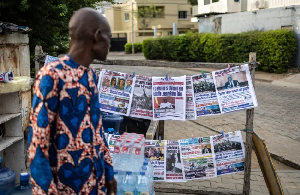The multilateral development banks (MDBs) and the IMF has signaled plans to extend more than $400 billion in financing over the next three years and vowed to work more closely with private and public sector partners.
This is to help mobilize the resources needed to meet the historic challenge of achieving the Sustainable Development Goals (SDGs).
The institutions, the African Development Bank, Asian Development Bank, European Bank for Reconstruction and Development, European Investment Bank, Inter-American Development Bank, World Bank Group (referred to as the MDBs), and the International Monetary Fund announced their plans in the lead-up to the Third International Conference on Financing for Development in Addis Ababa, from July 13-16.
The SDGs are ambitious and demand equal ambition in using the billions of dollars in current flows of Official Development Assistance (ODA) and all available resources to attract, leverage and mobilize trillions in investments of all kinds, public and private, national and global.
A statement from the World Bank said ODA, estimated at $135 billion a year, provides a fundamental source of financing, especially in the poorest and most fragile countries, but more was needed.
Investment needs in infrastructure alone reach up to $1.5 trillion a year in emerging and developing countries.
Meeting the staggering but achievable needs of the SDG agenda requires everyone to make the best use of each dollar from every source, and draw in and increase public and private investment.
The MDBs, the engines of development finance are looking to a range of options for scaling up.
The MDB development finance has grown from $50 billion in 2001 to $127 billion in 2015. For each dollar invested by its shareholders, MDBs are able to commit $2-5 in new financing each year.
The MDBs own direct private sector investments have increased fourfold over this period. They mobilized an additional $2-5 in private investment for every dollar they invest directly in private sector operations.
The vow to increase their contribution to more than $400 billion over the next three years reflects in part, efforts to make even better use of their balance sheets.
Additional steps to leverage more resources, include the development of new approaches and tools to help developing countries play a stronger role in harnessing national resources.
The MDBs and the IMF are partnering with countries on, for example, the introduction of a new toolkit to assess and improve tax policies and expanding instruments such as e-procurement to achieve better government spending.
“2015 is a critical year in charting the development future of Africa, the continent that still has the greatest development needs, and the continent that presents the greatest opportunity for itself and for the world”, said Donald Kaberuka, President, AfDB.
Takehiko Nakao, President, ADB said “this is a critical time for governments, the private sector and MDBs to come together to tackle the fundamental development challenges of our time. For its part, ADB has already taken the groundbreaking step to strengthen its lending capacity”
We must cast away the stereotypes of aid and think about development differently. Its about creating opportunity for all, giving people an equal chance to succeed in life, and preparing the world to deal with the challenges of climate change and the next pandemic, said Jim Yong Kim, President, World Bank Group
Increasing external resource flows to developing countries for investment is essential to achieving the SDGs but these flows can be expected to materialize only in circumstances where countries have coherent development strategies consistent with maintaining macroeconomic stability while also ensuring the delivery of key public sector services and a business environment supportive of growth.
Through their policy advice and technical assistance, the MDBs and IMF support countries in designing economic policies to achieve these objectives; through MDB policy support loans and IMF-supported programs, these institutions provide general financial support towards meeting budgetary and balance of payments needs.
The private sector is playing an increasing role in financing goods, services and infrastructure. The MDBs are committed to engaging differently with private sector partners on a wide range of interventions, including connecting investors with opportunities, helping countries make investments more attractive, and building local financial markets.
The MDBs are also partnering with others to develop innovative financing approaches to support global needs, such as health and climate and building on extensive work already underway.
Business News of Thursday, 16 July 2015
Source: GNA
Int’l Financial Institutions announce $400b to achieve SGDs
Opinions












